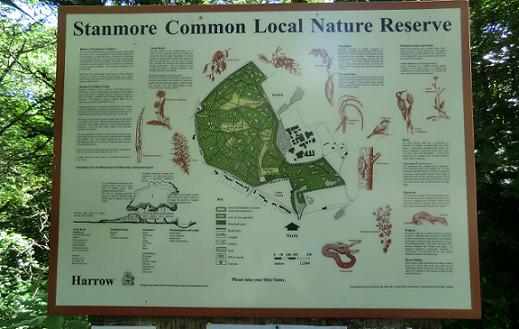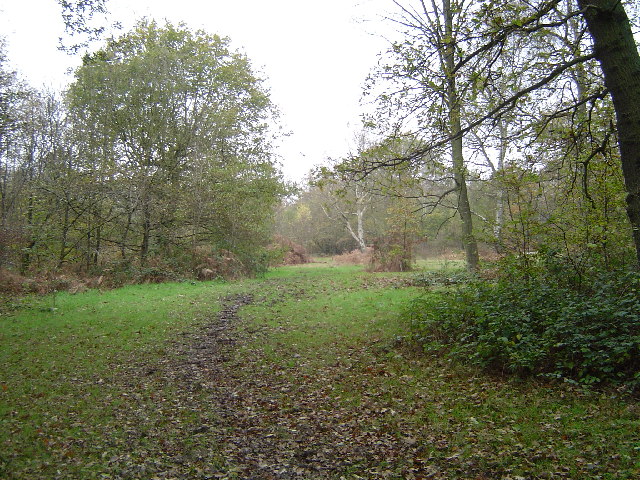Stanmore Common is a 49.2 hectare Local Nature Reserve and Site of Metropolitan Importance for Nature Conservation in Stanmore. It was formerly a biological Site of Special Scientific Interest, but was de-notified in the early 1990s.
History of Stanmore common.
In 793 AD land at Stanmore was given by the King of Mercia to St Albans Abbey, which held it until the Norman Conquest. Following an Enclosure Act in 1813 much of the land was lost to private ownership. The area was heath land until the end of the 19th century. It has rather poor soil so was unsuitable for agricultural improvement. The heath land was used by commoners for collection fuel and rough pasturage. This grazing and occasional fire maintained the common heath land. During the early 20th century the common began to convert to secondary woodland as livestock numbers dwindled. The secondary woodland is still present today. There are two archaeological relics that lie within the common: a tumulus of Bronze Age antiquity and a pillow mound which may have been artificially created in the Middle Ages as a rabbit warren.
The common is woodland and heath land, with two artificially created ponds. Most of the woodland is secondary as the ancient woods were long ago cleared for grazing, apart from a seven hectare area of older woodland at The Grove. The Common has many rare plant species, including the only heath spotted-orchids in London. Birds include the declining spotted flycatcher and bullfinch. There are also rare insects, and mammals include muntjac deer, wood mice, bank and field voles and shrews.

Stanmore common conservation
These days about 120 acres of Stanmore Common remain common land, held by Harrow Urban District Council. A management plan is in operation by the council in accordance with the countryside commission stewardship scheme . local volunteers from the harrow nature conservation forum and the British trust for conservation volunteers carry out the work. The plan is to restore and expand lowland heath as this habitat is in decline in the region. The grass heath supports the majority of the site more notable plants e.g. Lesser skullcap and marsh speedwell. There other plans support some nationally important invertebrates.
The Common is managed by voluntary wardens who work to record species and enhance the site’s biodiversity. Larger scale work, such as mechanical cutting of the open areas to prevent scrub growth, is performed by council contractors. Stanmore Common needs volunteers. If you would like to help, whether at one of our working parties or as part of the warden team, contact The Harrow Nature Conservation Forum
Walkers.
A pleasant walk can be taken around the common using the established path network. It is advisable to wear stout footwear, and keep to the footpaths or clearing which are being expanded gradually.
Horse riding
Horse riding is only permitted on the clearly marked horse ride which leads from the north end of Heathborne road around the north and then the east edge of the common to the junction of warren lane and Dennis lane.
